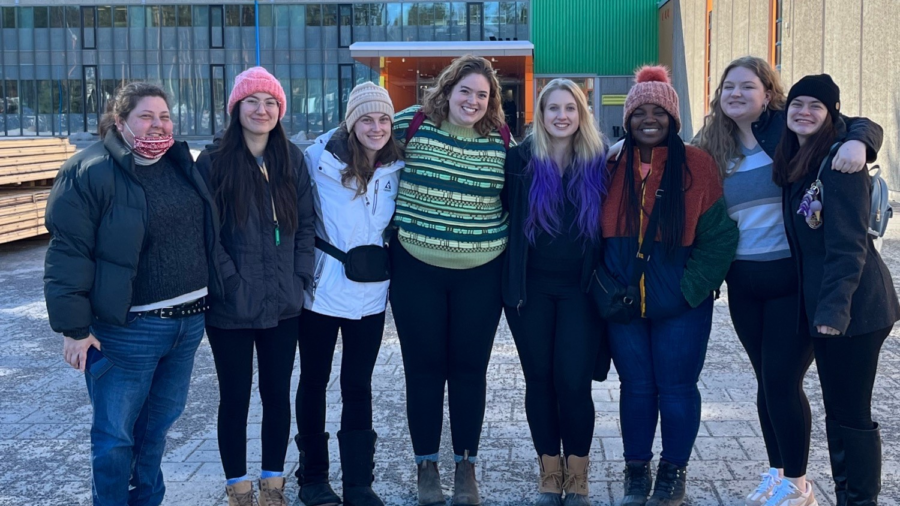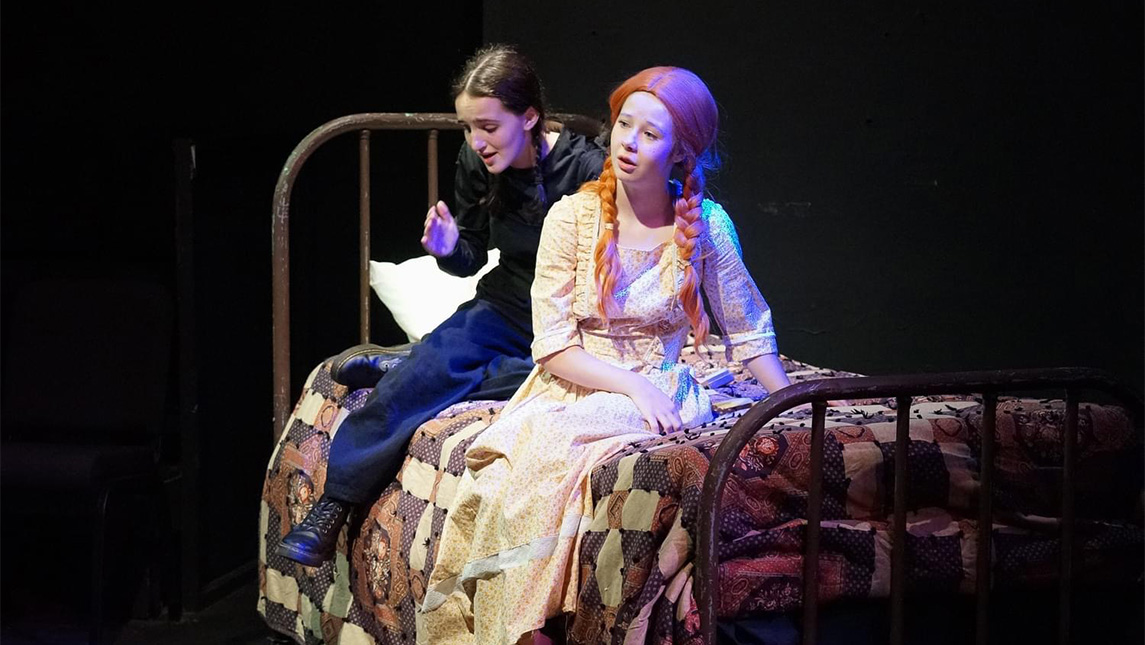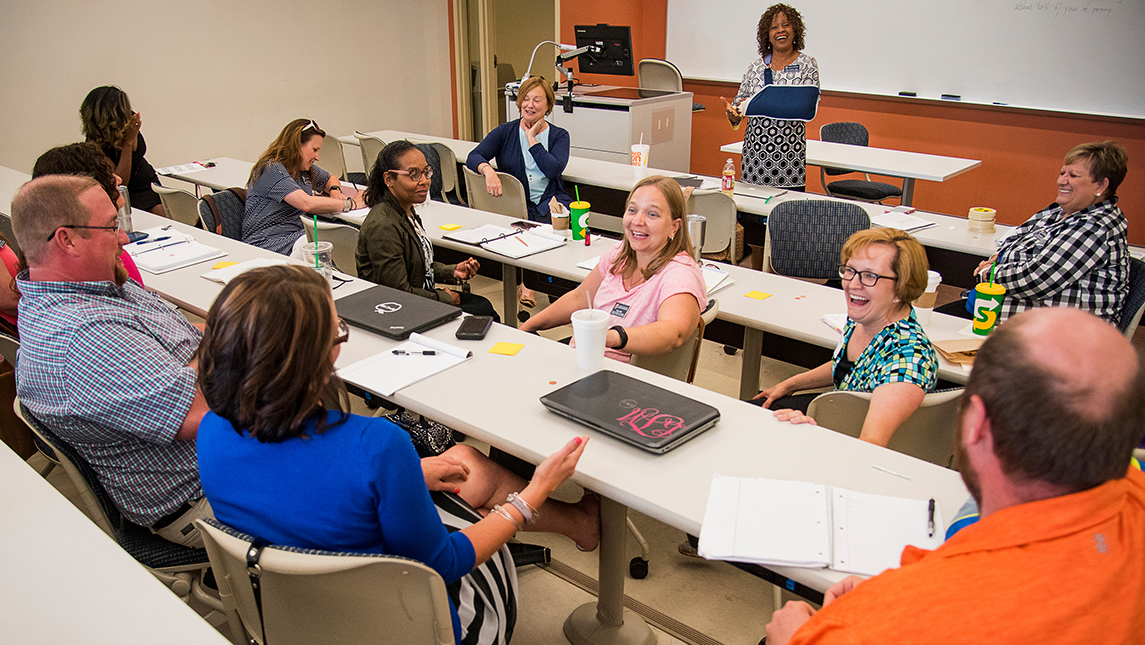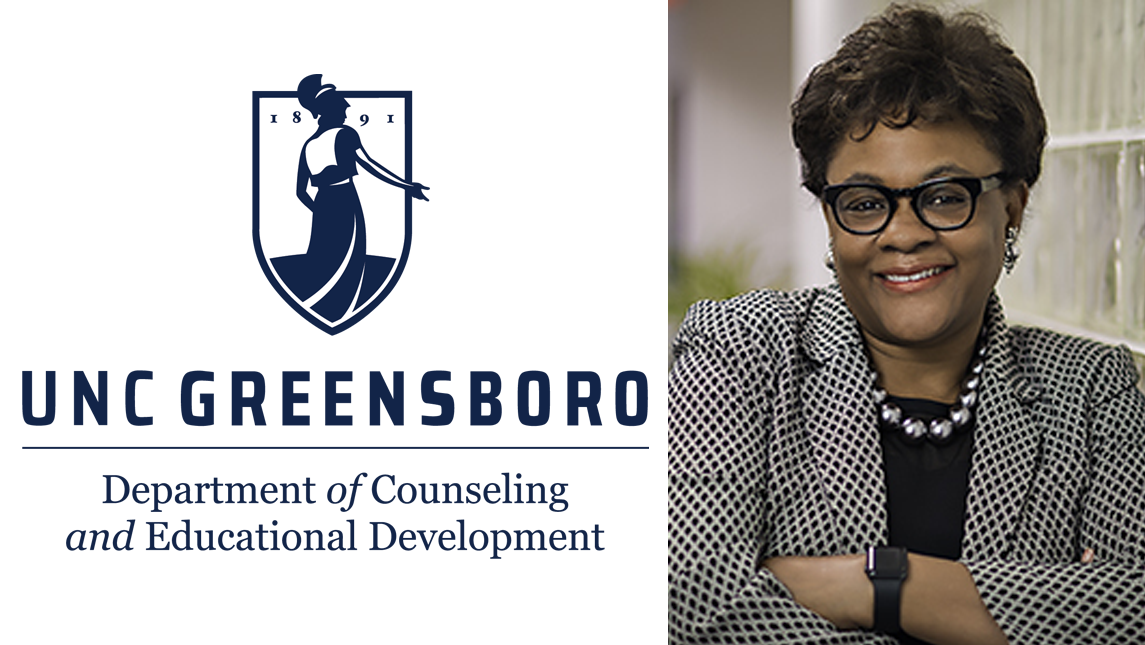In April of 2023, 16 UNC Greensboro School of Education student teachers traveled to Oulu, Finland, to extend their student teaching experience. Finland is one of the world’s highest achieving countries according to the PISA, the international exam for measuring educational achievement.
The student teachers met several times before embarking on the trip and asked, “Why do the Finnish Schools do so well? Is it how they teach or is it that the students in Finland are different?”
Spoiler Alert! At the end of the trip, student teachers agreed unanimously, the Finnish students were not any different from the American students in their student teaching classrooms. As the student teachers put it, “kids are kids.” Over the 2 ½ weeks at Oulu International School the student teachers reflected daily in journals and debriefed regularly with faculty who directed the trip. The student teachers came to believe that Finnish Schools are guided by a fundamental principle – the goal of education is to prepare students for a happy, healthy and successful adulthood. They saw teachers enacting this principle in a multitude of ways. The student teachers described this principle using evidence of a few themes: self-sufficiency, healthy habits, and expectations for success.
Self-Sufficiency
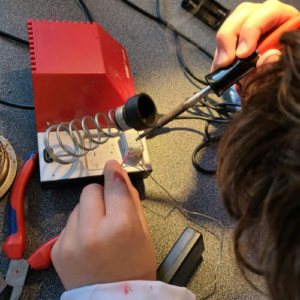
Matthew was a UNCG student teacher placed in a fourth grade classroom in Oulu. On one of his first days there, Matthew observed his fourth graders in woodworking class. “I was impressed to see them making toolboxes, soldering electrical wiring, and drilling holes to run wires through,” he said.
The following week, Karly, a student teacher in third grade commented on the craft lesson she observed, saying, “Students were making a pencil pouch and creating a portfolio about the process and the steps they took to complete it. Students who finished were able to make pillowcases out of old clothes. Students were using the sewing machine completely by themselves.”
Ericka, a student teacher in seventh grade observed students in cooking class. She said, “Using the remainder of the ingredients that were listed on the white board, which ranged from tomato paste to yeast, students were to either create a recipe or obtain a recipe from a prior class meeting and make the food in one class period. Students were being assessed on their group collaboration, time management, kitchen area cleanliness, final product, and their use of ingredients.”
Students at every grade level took these classes; cooking, textiles, and technology (using tools). The Finnish believe that it is imperative for students to move through these classes their entire K-12 experience so that they will be self-sufficient adults.
Healthy Habits
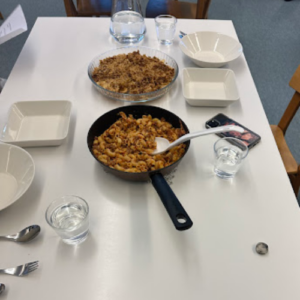
To be physically healthy and mentally prepared for lessons, the Finnish students go out for recess twice for 15 minutes and then once for 30 minutes every hour. The weather can be very harsh in Finland so when we asked if it’s ever too cold for students to go outside, the Finnish teachers said, “Yes, if it’s minus 22 degrees Fahrenheit students play indoors.”
Matthew described the day his fourth graders had two PE classes, back-to-back and how tired he became (Note: Matthew works out in the gym a lot!). He said, “My class went to two consecutive PE sessions. For a warmup, students were placed on teams and competed to collect their team’s UNO cards in the middle of the gym. This was basically 20 minutes of interval sprints, more activity than a typical PE class back home includes in its entirety. For the actual PE activity, students remained in their eight groups and did stations. The stations consisted of rope climbing, jumping rope, gymnastics bars, jumping from the elevated stage onto a mat, jumping from trampolines onto mats, cartwheel and tumbling station, head/handstands, and a parkour station. I tried to jump around and do each activity with different groups and the students, and I was sweaty and out of breath most of the class.”
The student teachers also found it interesting that the school lunches were very health-conscious, so much so that the cafeteria doesn’t allow ketchup, due to the large amount of sugar. It was obvious, even through observation in town, that the Finnish people are health conscious.
Expectations for Success
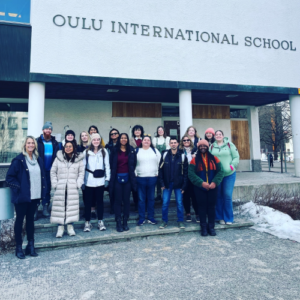
The UNCG student teachers discovered that Finnish students misbehave just as American students do, however, the philosophy, expectations, and discipline practices are very different. Thomas, a UNCG student teacher observed in an ESL class. He reflected with the Finnish teacher on the expectations of students in Finland vs. the United States.
He said, “Today my teacher and I continued our conversation about the expectations of the students in Finland versus the students in the United States. At a very basic level, the children in Finland are expected to have a much higher level of self-regulation than is expected in the United States. For example, you only need to look around an American school to know that the environment had been set up for low self-regulation and distrust. The chairs are hard, the benches are hard with no cushions, the trays are Styrofoam, and the only utensils given to students are flimsy plastic sporks! The students are required to be ferried from class to class in single file silence. If they must use the restroom, they must sign out one at a time, and carry a hall pass just to allow them to use the toilet!
“All these environmental structures are not set up to teach better self-regulation, they are set up to avoid the perceived inevitable issues as though the children were inmates at a prison! In the Finnish culture however, students are culturally pressured to maintain a higher level of self-regulation and are trusted to make the right decisions. Does this always happen? No. But these are learning moments for the students to see and experience the consequences of their actions and to make a better choice next time. This higher expectation of the children’s ability to self-regulate allows the Finnish school to put cushions on seats, sofas in the halls, and ceramic dishware and metal utensils in the cafeteria. It allows the trust that the children will reach their classes on time or use the restroom on their own if they need to. Our elementary education has taught us that children will rise to the expectations that are given to them because children want to do the right thing. So why do we set such low expectations for our children at home and treat them as unruly animals, rather than embracing these everyday learning experiences for these young people who are still learning about our world and how to live in it?”
It would require writing a book to describe the many ways Finnish schools differ from the United States and many have been written. But what the student teachers witnessed was that Finland has a clear vision of what they want their students to become, and their actions align with that vision. In August, the student-teachers will have their own classrooms, and many will be in North Carolina. The hope is that they take the knowledge and skills learned in the UNCG School of Education and the observations and inspiration from their experience in Oulu, Finland, and use them to benefit every child they teach so that they grow up to be happy, healthy adults.
